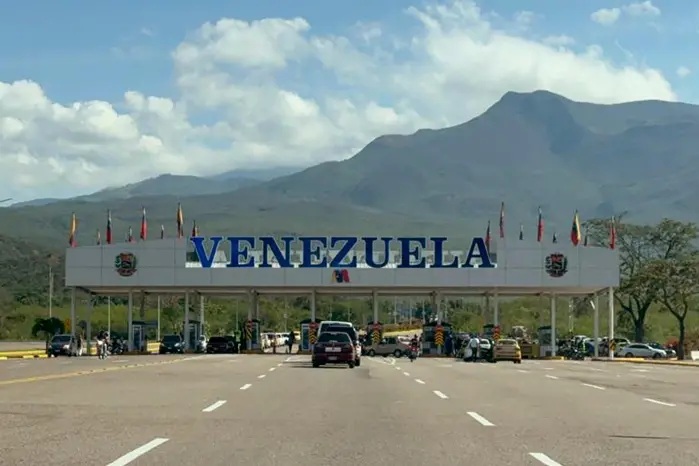Carbon Negative: Panama Leads the Way

Human-induced global warming is arguably the most significant environmental concern in mankind’s history. Caused largely by the burning of fossil fuels such as oil (and gasoline), coal, and natural gas, global warming has permanently reshaped coastlines, transformed both local and global weather patterns, and has disrupted entire ecosystems. In an attempt to mitigate the impact of global warming, many of the world’s countries have begun making efforts to minimize carbon emissions and become either carbon-neutral countries or carbon-negative countries.
Carbon-negative countries are those whose carbon-mitigation efforts have led to them removing, or sequestering, more carbon than they emit. Therefore, carbon-negative countries are actively helping to reverse global warming and climate change. Carbon negativity is particularly difficult to attain in developed and developing countries, where motor vehicles, industrial operations, and power plants tend to burn vast quantities of fossil fuels. This, in turn, releases large amounts of carbon into the atmosphere and creates a large carbon footprint.
Carbon-Negative Countries:
○ Bhutan
○ Panama
○ Suriname

The Difference Between Carbon-Neutral Countries vs Carbon-Negative Countries
Although the terms carbon-neutral and carbon-negative are related, they actually have two distinctly different meanings. Both carbon-neutral and carbon-negative countries still generate carbon emissions—which is arguably counter-intuitive. The difference between the two terms is the degree to which the countries offset those emissions.
Carbon-neutral countries offset their CO₂ emissions with carbon mitigation efforts (such as planting trees) that sequester an equal amount of carbon. Therefore, the country’s net carbon emissions are zero, or neutral. By going carbon-neutral, also known as “net-zero”, a country can ensure that it is no longer contributing to climate change. By comparison, carbon-negative countries take the mitigation process further and sequester more carbon than they emit. Excess carbon sequestration can arguably help slow or reverse the effects of climate change. Many carbon-neutral countries continue their mitigation efforts until they reach carbon-negative status.
Note that net zero is different from zero-carbon, which describes a device or location, such as a solar-powered home or electric vehicle, that produces no carbon emissions.
Finally, countries which still emit more carbon than they sequester may at times be referred to as carbon-positive countries. Considering that the overwhelming majority of the world’s countries fall into this category, carbon-positive is a notably more common—though significantly less desirable—label than carbon-neutral or carbon-negative. While many countries are making an effort to reach net-zero or carbon neutrality, the process of reducing CO₂ emissions is notably easier for some countries than for others.
A 2022 report from the United Nations Environment Program determined that roughly 75% of all emissions come from a small group of only 20 emitters (19 countries and the collective European Union). Moreover, roughly 50% of all emissions come from a mere seven emitters: China, the United States, India, the European Union, Indonesia, Russia, and Brazil.

Profiles of Carbon-Negative Countries
Bhutan
Sandwiched between two of the world’s most populous countries (China and India), the tiny Asian nation of Bhutan was the first country in the world to become carbon-negative in the modern era. Bhutan’s natural ecology lends itself well to carbon-mitigation efforts—dense forests cover more than 70% of the country’s land area, absorbing CO₂ in vast amounts. Moreover, the country has moved to keep it that way, banning logging exports and amending its constitution to ensure that at least 60% of the country will always be covered in forest. Volunteers in Bhutan set a world record in 2015 by planting 49,672 trees in a single hour.
Panama
The third carbon-negative country in the world also boasts an ecology rich with flora, with 65.4% of its territory covered by rainforests, swamps, and jungle. More than 33% of Panama’s land is protected, and its government is working to reforest 50,000 hectares of land by the year 2050. Unlike Bhutan and Suriname, which support populations of fewer than a million residents, Panama is home to more than four million people (4,441,023 as of Jan. 2023).
Suriname
The second carbon-negative country in the world, Suriname is not only the smallest (163.8 km²) and least-populous (620,000 as of Jan. 2023) sovereign nation in South America, it is also one of the poorest. Mining—particularly for bauxite (aluminum), gold, and oil—is the main tentpole or Suriname’s economy. Yet despite the potentially damaging impact that mining activities can have on the surrounding environment, Suriname remains the most heavily forested country in the world, with estimates of its forest cover ranging from 90-97% of its surface area.





